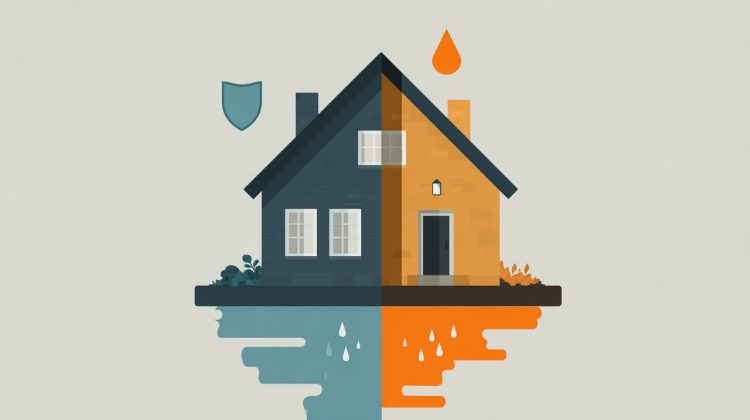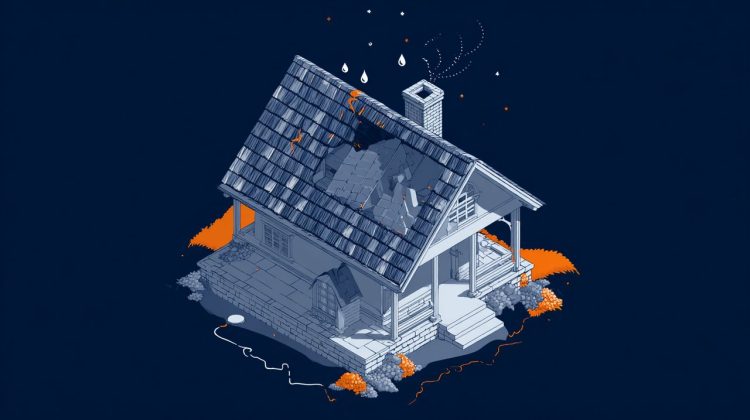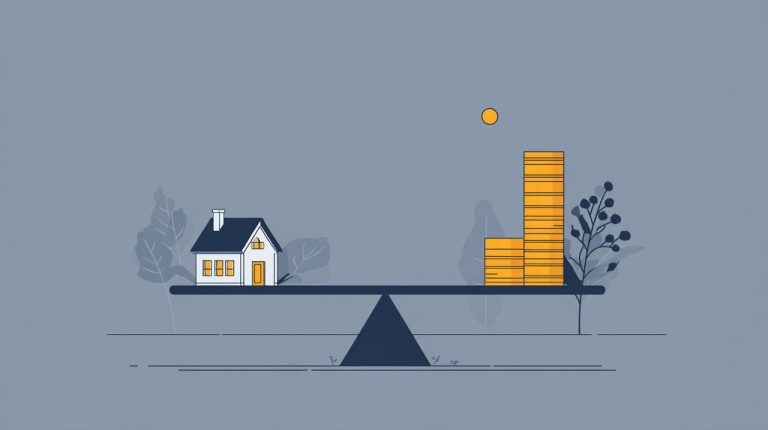Look, I’ve seen it a thousand times. Homeowners don’t worry about their roof until it’s too late – usually when water’s dripping onto their antique rug or a chunk of ceiling plaster lands on their head. By then, what could have been a minor fix turns into a five-figure nightmare. It’s like waiting for your car’s engine to seize before checking the oil. You wouldn’t do that, would you? So, why do it with the biggest investment you own?

Roof Health: Why Early Identification Matters
Your roof isn’t just some hat on your house; it’s the absolute frontline defense against everything Mother Nature throws at you. It’s what keeps your family dry and your belongings from turning into a moldy science experiment. Trust me, I’ve walked into homes where a tiny, ignored drip from a compromised shingle turned into a full-blown structural nightmare, rotting out rafters and breeding black mold that cost more to remediate than a brand new roof.
That’s not just a repair bill; that’s a gut punch to your wallet and your peace of mind. Catching these things early isn’t just smart; it’s the difference between a minor patch and a complete rebuild. It’s like finding a small rust spot on your car versus waiting until the wheel falls off – one’s a quick fix, the other’s a total loss.
10 Critical Signs Your Roof Is Crying for Help
Now, you might be thinking, ‘Okay, Mr. Inspector, I get it. But how do I actually spot these problems before they become catastrophic?’ Good question. After decades of climbing on more roofs than I care to count, I’ve compiled the definitive list. These aren’t just ‘signs’; they’re blaring sirens telling you your roof is on borrowed time. Pay attention.

Damaged or Missing Shingles
Let’s start with the obvious. Your shingles are the armor plating of your roof. If they’re compromised, so is everything underneath. Don’t just glance; really look.
- Cracked or Broken Shingles: These are battle scars from age, hail, or just cheap materials. Each crack is an open invitation for water to sneak in.
- Curling or Buckling Shingles: This is your roof telling you it’s had too much moisture or was installed by someone who didn’t know what they were doing. They’re losing their grip, literally.
- Blistering or Peeling: Think of this as your roof’s skin flaking off. It’s often a sign of trapped moisture trying to escape or a manufacturing defect finally giving up.
- Missing Shingles: This isn’t just an aesthetic problem; it’s a gaping hole in your home’s defense. It leaves your roof deck naked and vulnerable to the next downpour. I once saw a single missing shingle lead to a homeowner losing half their attic insulation to a raccoon.
Excessive Granule Loss
Those tiny granules on your shingles? They’re like the sunscreen for your roof, protecting it from the sun’s brutal UV rays and adding fire resistance. If you’re finding them by the handful in your gutters, it’s not just fall leaves; it’s your roof shedding its protective layer. Without them, your shingles are rapidly deteriorating, like a sunburned tourist in the desert. Your roof might even look patchy or darker in spots where they’ve vanished.
Sagging or Soft Roof Deck
Take a good look at your roofline from the street. Does it look like a straight line, or does it resemble a sad frown? Any noticeable sag, especially along the ridge, means you’ve got serious structural problems with the decking or framing. And if you dare venture into your attic and feel a soft, spongy spot when you step? That’s rot. That’s water damage. That’s your home telling you it’s crumbling from the inside out. This isn’t a ‘maybe later’ problem; it’s a ‘call someone now‘ problem.
Attic Leaks or Water Stains
This one’s a no-brainer, but people still try to ignore it. If you’ve got water in your attic or stains spreading across your ceiling, your roof has failed its primary duty. It’s not ‘just a little leak’; it’s a breach.
- Water Stains: Those ugly brown or yellow patches on your attic sheathing, drywall, or walls? They’re a roadmap of where water has been, and where it’s still coming from.
- Dripping Water: If you hear that tell-tale drip-drip-drip during a storm, or worse, see a steady stream, you’ve got an active leak. This is the roof equivalent of a gaping wound.
- Mold or Mildew Growth: Where there’s persistent moisture, mold will thrive. Not only is it destroying your home’s structure, but it’s also a serious health hazard. I’ve seen entire attics turn into fuzzy, black ecosystems because a small leak was ignored for too long.
These leaks often sneak in through compromised shingles, faulty flashing around chimneys, or worn-out vent seals – the usual suspects.
Moss or Algae Growth
That green fuzz or those dark streaks on your roof might look ‘natural,’ but they’re actually invaders. Moss is like a sponge, holding moisture against your shingles and rotting them out from the top down. Algae, those ugly black streaks, isn’t just an eyesore; it’s slowly eating away at the limestone filler in your shingles, making them brittle and weak. This isn’t a cosmetic issue; it’s a slow-motion demolition. If your roof looks like a neglected swamp, it’s probably time to consider a replacement.
Roof Age
Let’s talk about the elephant in the room: age. Most asphalt shingle roofs are designed to last 20-25 years, maybe a bit more if they were installed perfectly and lived a pampered life. Metal roofs can go 50 years or longer. But here’s the kicker: even if it looks okay, a roof nearing or past its prime is like an old car with 300,000 miles on it. The internal components – the adhesives, the matting, the granular bond – are breaking down long before you see a missing shingle. You wouldn’t trust a bridge past its expiration date, would you? Don’t trust your roof.
Chimney and Vent Issues
Chimneys, skylights, exhaust vents – these are the Achilles’ heels of your roof. Every penetration is a potential leak point. The flashing and sealant around them take a constant beating from the elements and often fail long before the shingles do. I’ve seen countless homes with beautiful, relatively new roofs, but a rusted piece of flashing around a chimney turned the attic into a swimming pool. Cracks in the caulk, rust on the flashing, or visible gaps are not minor; they’re direct express lanes for water into your home. These small details are often where your roof’s integrity truly gets tested.
High Energy Bills
Suddenly, your energy bills are through the roof, pun intended. While there are many culprits, don’t overlook your actual roof. Poor attic ventilation, damaged insulation, or a compromised roof deck turn your home into a sieve for conditioned air. Your roof is a crucial part of your home’s ‘thermal envelope’ – think of it as a giant, insulated thermos. If that thermos is cracked, you’re just heating or cooling the neighborhood, and that’s money pouring straight out of your wallet.
Sunlight in the Attic
Here’s a simple test: on a sunny day, crawl into your attic, turn off all the lights, and look up. If you see pinpricks of light or, God forbid, actual rays of sunshine filtering through, you’ve got holes. Those aren’t just ‘gaps’; they’re welcome mats for water, pests, and unconditioned air. This is a clear, undeniable breach in your roof’s protective barrier. It’s like finding a bullet hole in your bulletproof vest.
Neighbors’ Roof Replacements
Finally, a simple, often overlooked indicator: look around your neighborhood. If your neighbors, especially those in homes built around the same time as yours and exposed to similar weather, are suddenly getting new roofs, it’s not just a trend. It’s a strong hint that your roof’s lifespan is also coming to an end. They’re likely facing the same issues you will, or perhaps they’ve already had their inspector tell them the bad news. Sometimes, the best warning sign is simply paying attention to what’s happening next door.
Next Steps After Identifying a Problem
So, you’ve done your homework, you’ve checked the signs, and now you’re pretty sure you’ve got a problem. What’s next? This is where people often make their biggest mistake: they hesitate. Don’t. Delaying a professional assessment is like letting a small cavity turn into a root canal. It’s always cheaper to fix it early.
Your next move is to get a reputable, local roofing contractor on your property for a thorough inspection. They’re the ones who can get up there safely, poke around, and give you the real diagnosis. Believe me, their expertise is worth every penny, especially when you consider how to find a truly reliable roofing contractor.How to Find a Reliable Roofing Contractor: A Homeowner’s Essential Guide
Understanding Residential Roof Replacement Costs
Alright, let’s talk numbers – the part no one likes, but everyone needs to understand. The cost of a new roof isn’t just the price tag on a bundle of shingles. It’s a complex equation with many variables, and if you don’t understand them, you’re setting yourself up for a nasty surprise. Here’s what actually drives the bill:
- Material Choice: Asphalt shingles are the budget option, but if you’re dreaming of metal, tile, or slate, prepare for a significantly higher investment. You get what you pay for, and sometimes, you pay for what you didn’t expect, especially when considering the most durable roofing materials for extreme weather.A Practical Guide to The Top 5 Most Durable Roofing Materials for Extreme Weather
- Roof Size and Pitch: Bigger roofs mean more materials and more labor. And a steep pitch? That’s harder, riskier work, so expect those labor costs to climb right along with the workers.
- Old Roof Removal: Don’t forget, they have to get rid of the old stuff first. Tearing off existing layers adds to labor and, more importantly, disposal fees.
- Decking and Structural Repairs: This is where the real hidden costs can lurk. If your inspection reveals rotted decking or compromised framing underneath, that’s extra work and extra materials you’ll pay for. I’ve seen homeowners budget for a simple re-roof and end up with a bill double their estimate because the underlying structure was a disaster.
- Accessibility: Is your roof easy to get to, or do they need a crane and a team of mountain climbers? Complex architecture or difficult access points will definitely increase labor costs.
- Permits and Warranties: These should be standard, but always confirm they’re included in the quote. A reputable contractor will handle the permits, and a solid warranty is your peace of mind.
Demand a detailed, itemized quote from any contractor. Don’t settle for a handshake and a ballpark figure. This isn’t just about budgeting; it’s about protecting yourself from unexpected charges down the line. If they can’t break it down for you, find someone who can.
So, what’s the takeaway from all this? It’s simple: your roof isn’t just planks and shingles; it’s the guardian of your home, your possessions, and your family’s comfort. Ignoring its cries for help is a rookie mistake that will cost you dearly – far more than a timely inspection or even a full replacement. Remember that scenario I mentioned at the beginning, the one about water dripping onto the antique rug? Or the moldy books in the attic? This entire discussion, every warning sign, every hidden cost, is about making sure you never have to live through that kind of nightmare, which often starts with finding a contractor you can truly trust.How to Get Out of Credit Card Debt in 5 Steps? Be proactive, be vigilant, and don’t hesitate to call in an expert. Because protecting your home truly does start from the top, and your peace of mind is worth every penny.
💡 Frequently Asked Questions
Addressing roof issues early prevents minor fixes from escalating into costly structural damage, such as rotting rafters and black mold, which can be more expensive to remediate than a new roof.
Critical signs include damaged or missing shingles (cracked, curling, blistering), excessive granule loss, a sagging or soft roof deck, attic leaks or water stains, and the presence of moss or algae growth.
A homeowner should immediately contact a reputable, local roofing contractor for a thorough professional inspection, as delaying can lead to significantly higher repair costs.
The cost of a roof replacement is influenced by material choice, roof size and pitch, the need for old roof removal, potential decking and structural repairs, roof accessibility, and the inclusion of permits and warranties.








